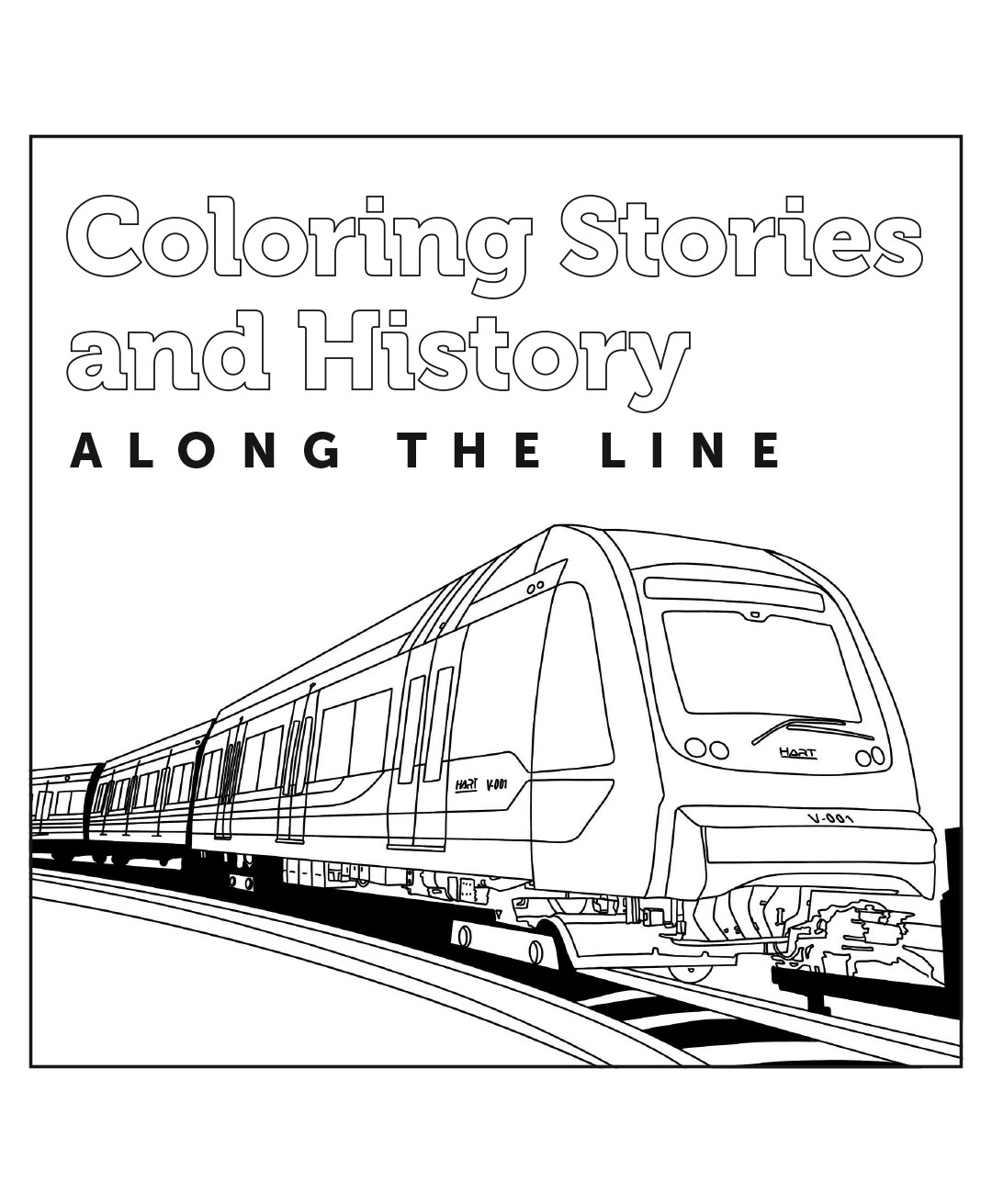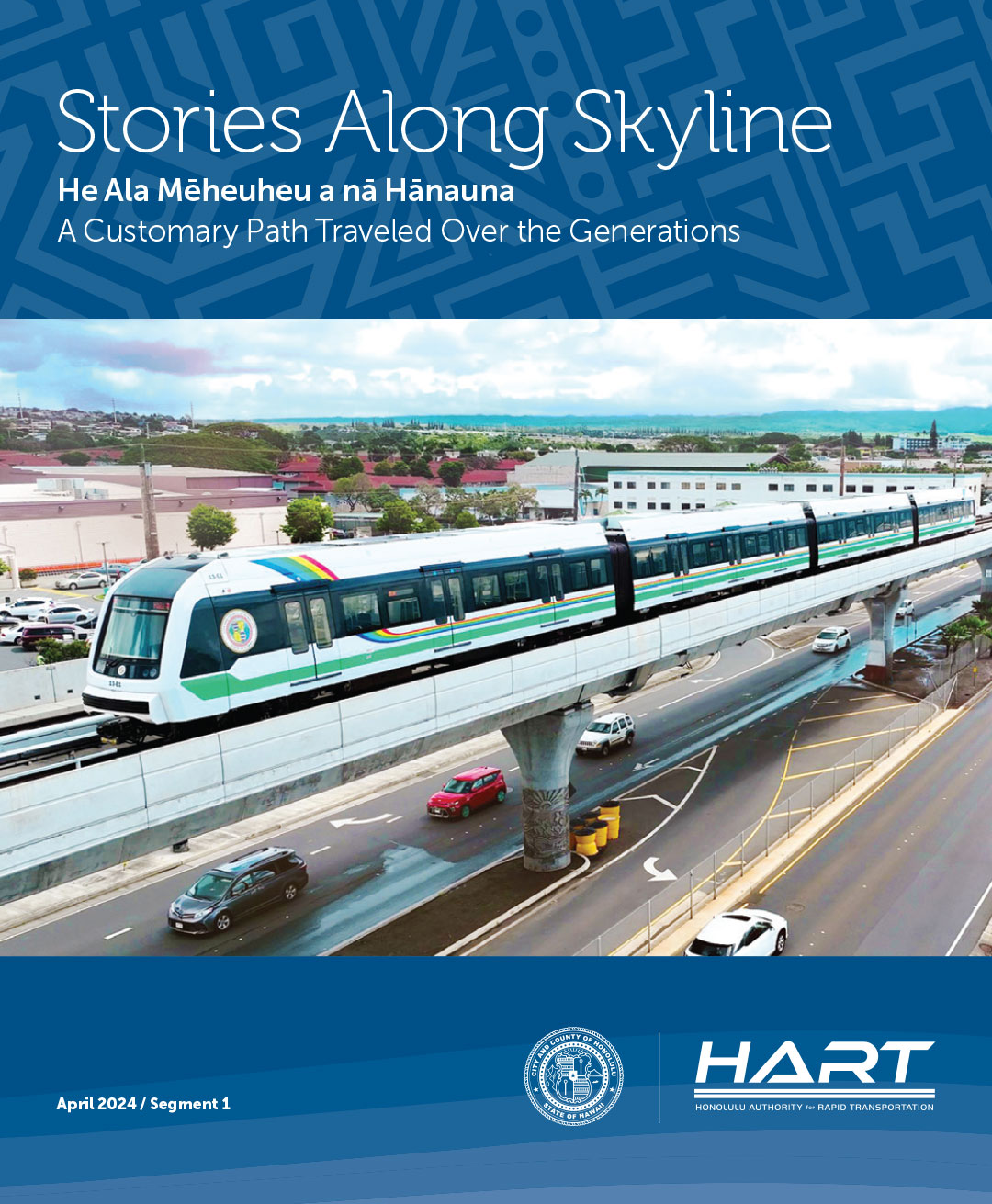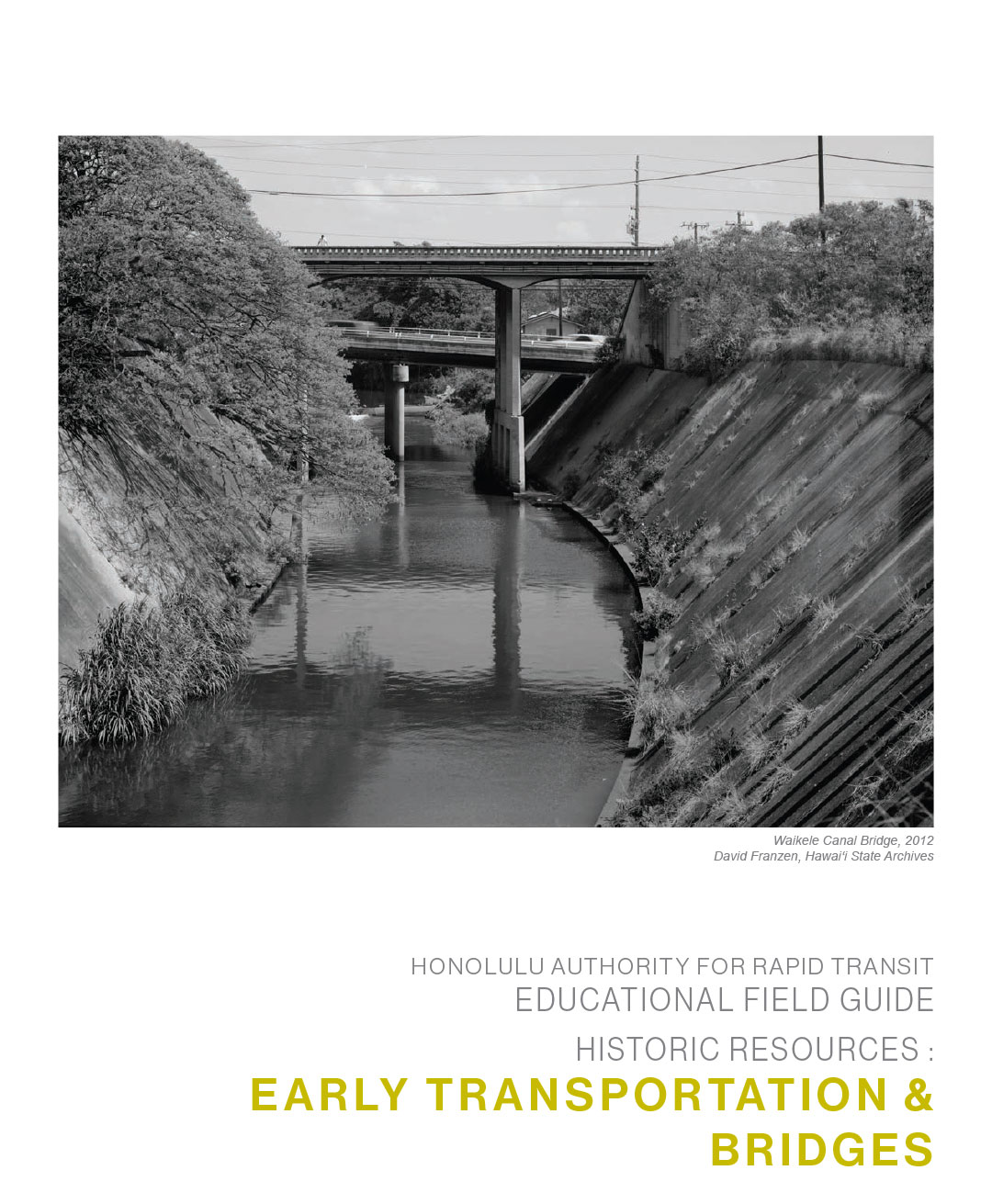
The first batch of a planned series of educational and historic interpretive materials has been released to enrich the passenger experience along Honolulu’s elevated train system, known as Skyline.
Honolulu Authority for Rapid Transportation (HART) produced three items that were publicly released in April 2024:
Coloring Book
Professional historians and illustrators prepared a coloring book to educate children about local history at each transit station. Featuring illustrations reflecting historical events or significant sites in Hawaiian culture, each page includes a synopsis highlighting the area’s history. The intent of the coloring book is to give children a broad historical knowledge of each built and planned station while fostering creativity.
HART developed the educational materials to share histories of places accessible from the guideway as part of the suite of mitigation measures to resolve effects on historic properties identified along the rail system’s route.
The project’s Programmatic Agreement (Stipulation VII) includes several ways to engage with the public, especially passengers but also the general community, to learn more about historic events and places.
The original Agreement called for all of the products to be complete at the time passenger service began, which was July 2023. However, the construction schedule was changed to open the line in several segments instead of the entire line at once. As a result, HART and the Federal Transit Administration gained the Hawai‘i State Historic Preservation Division’s agreement to develop and release the materials sequentially to correspond to each segment opening.
In addition to future chapters to be added to the Brochure and the Educational Field Guide, the Educational Program is also required to include other mitigation measures. The most significant of these will be:
- A Humanities Program that will explore human histories, cultures, and values. This program will enhance visitor and resident exposure to the depth of history and culture in the vicinity of the Project. The Humanities Program will educate the public about important topics in Hawaiian history through conferences/seminars, research fellowships, media programs, exhibits, lectures, and publications. The Humanities Program will also consider conducting select architectural surveys as a component of the potential program that may inform other program aspects; and
- A Historic Preservation Educational Program to encourage the rehabilitation of historic properties located along the transit route. This effort will include printed and electronic information about proper rehabilitation practices; benefits of historic designation; financial incentives available for eligible properties; and existing resources for assistance in pursuing these options.




